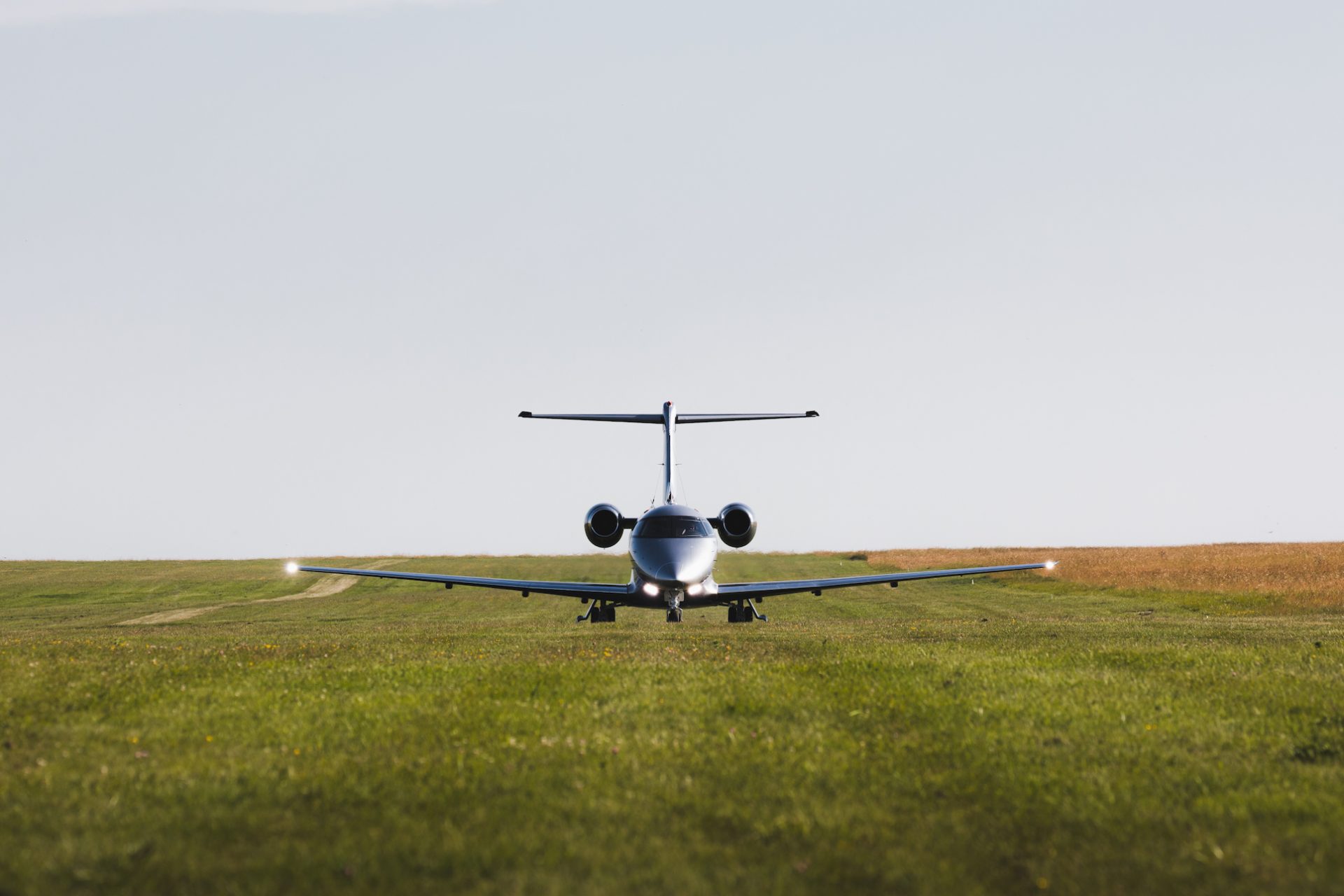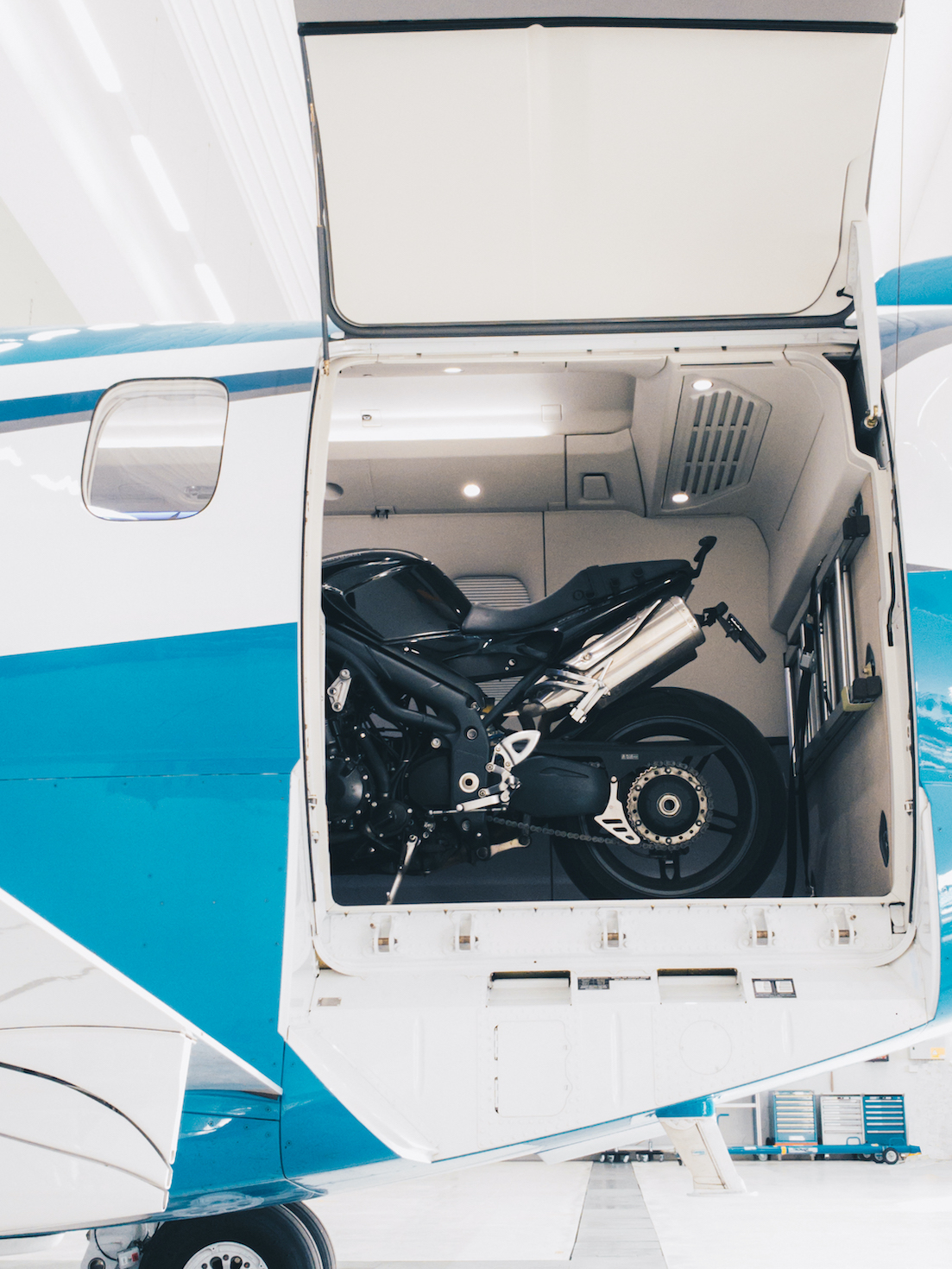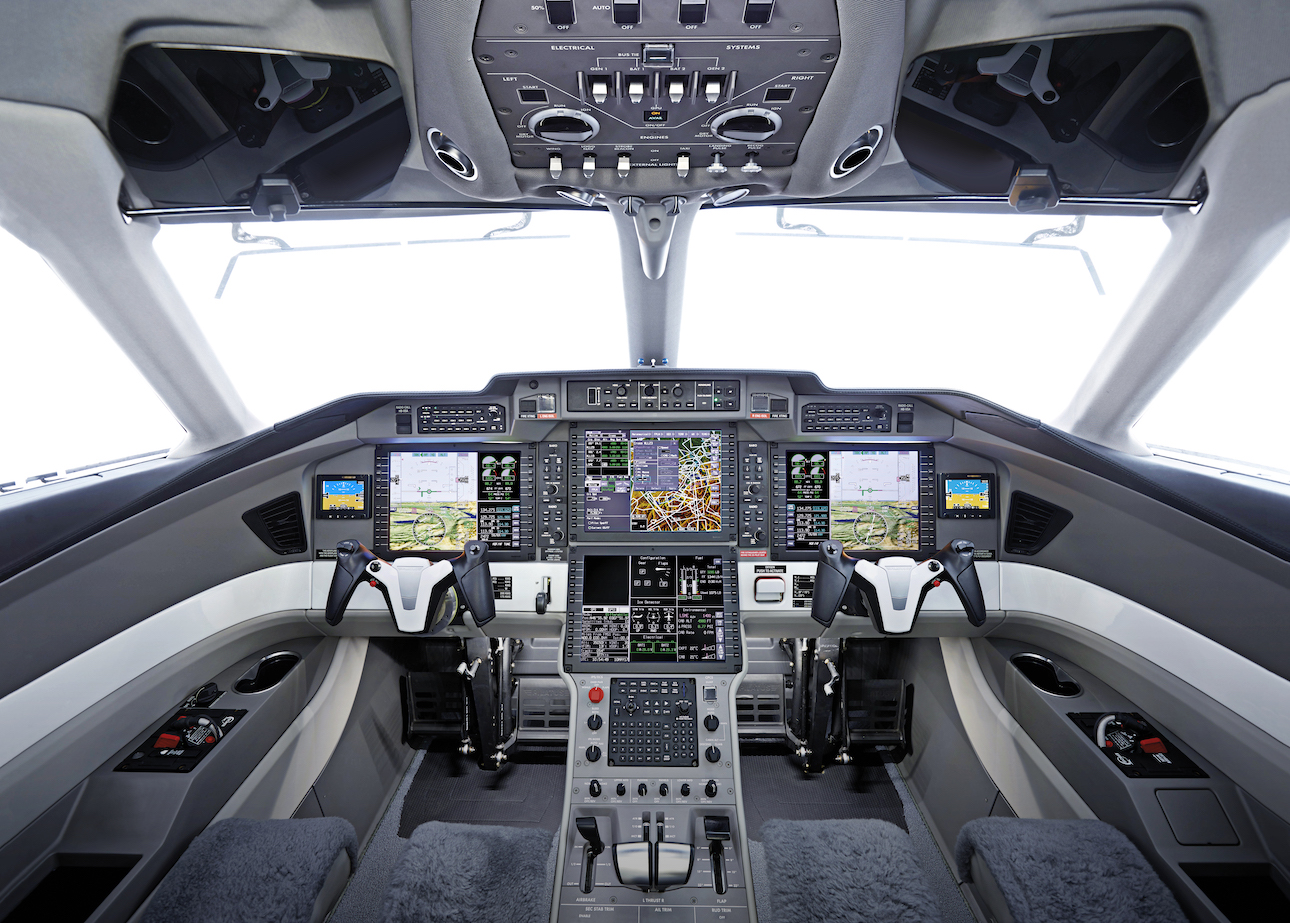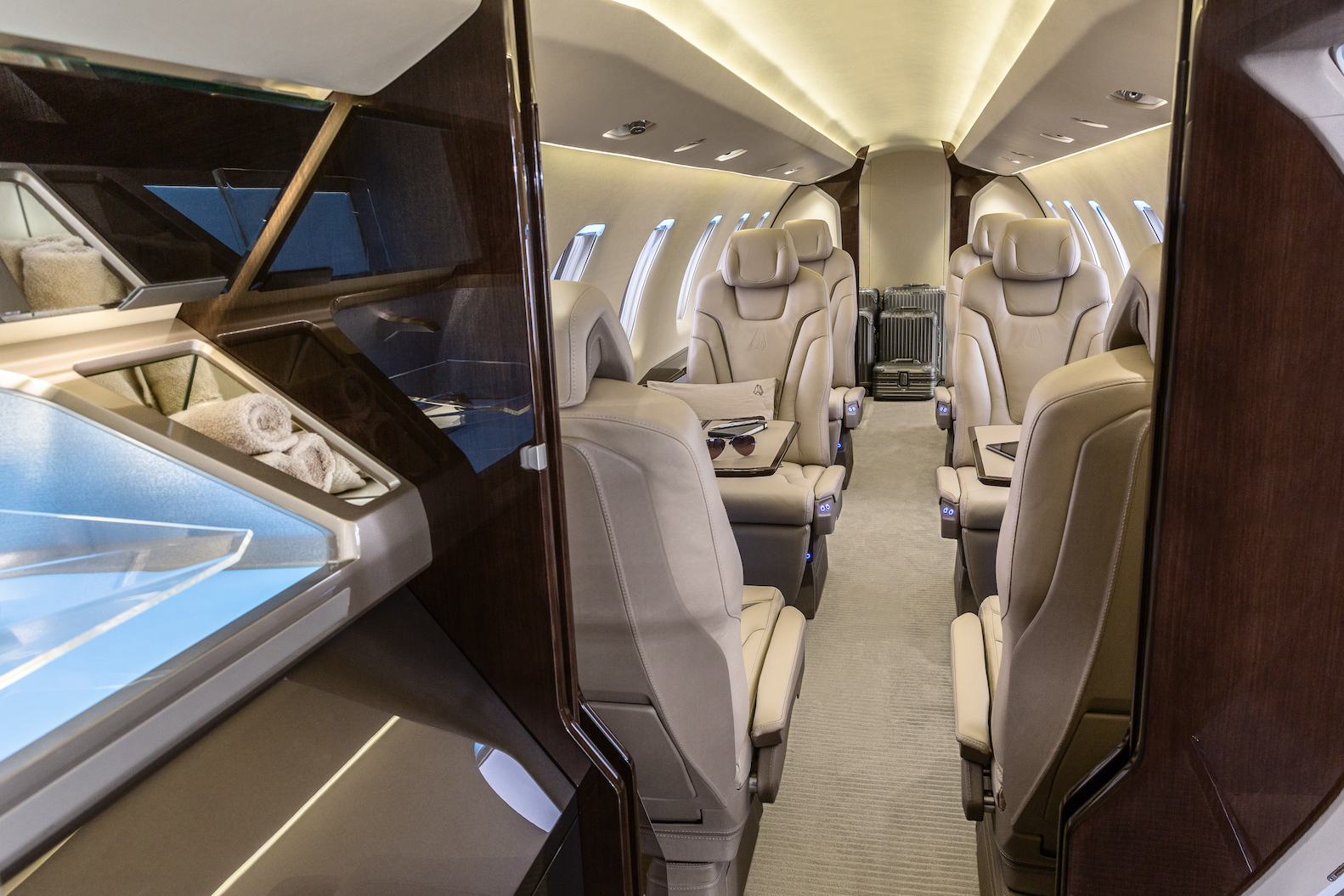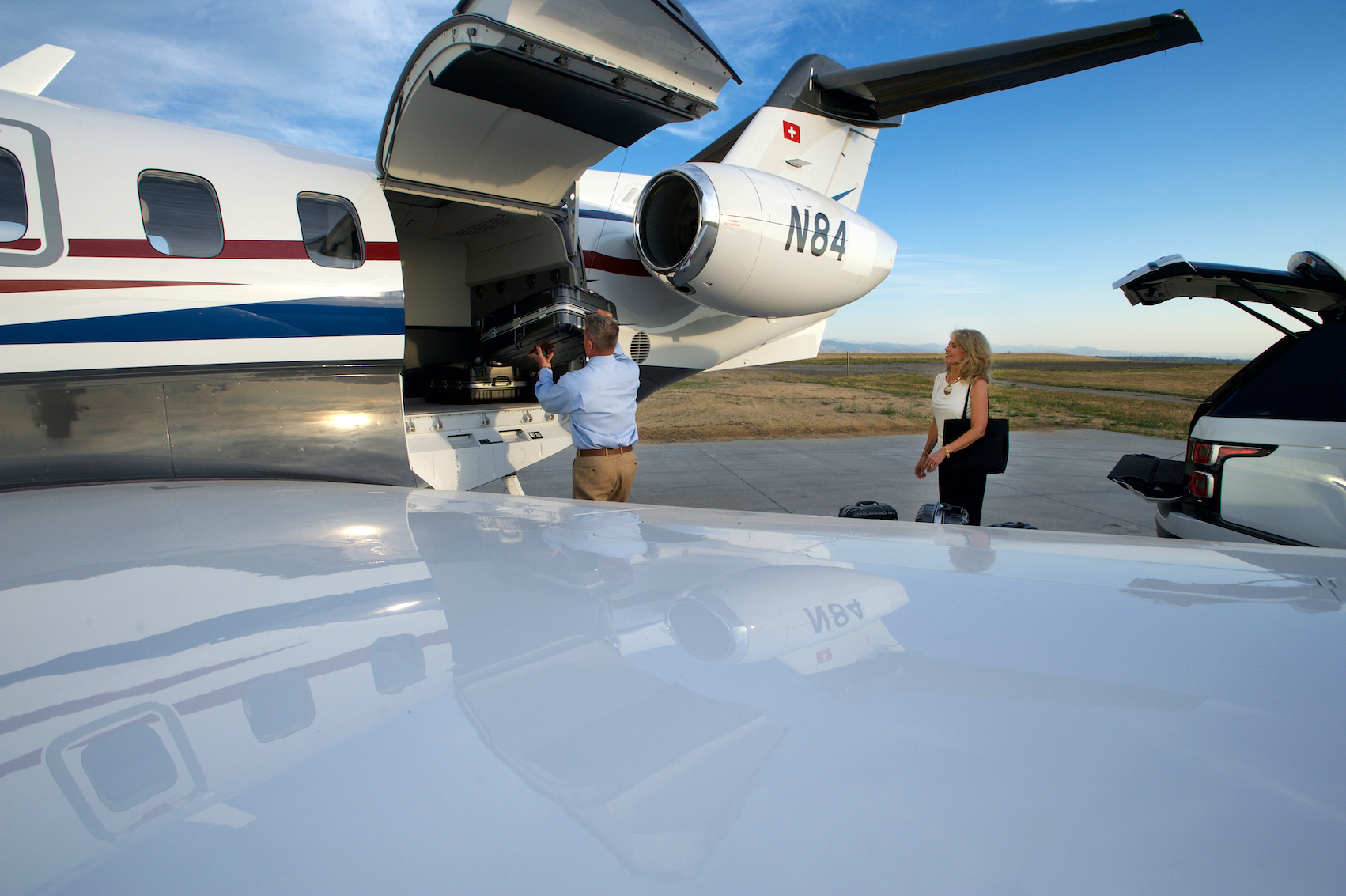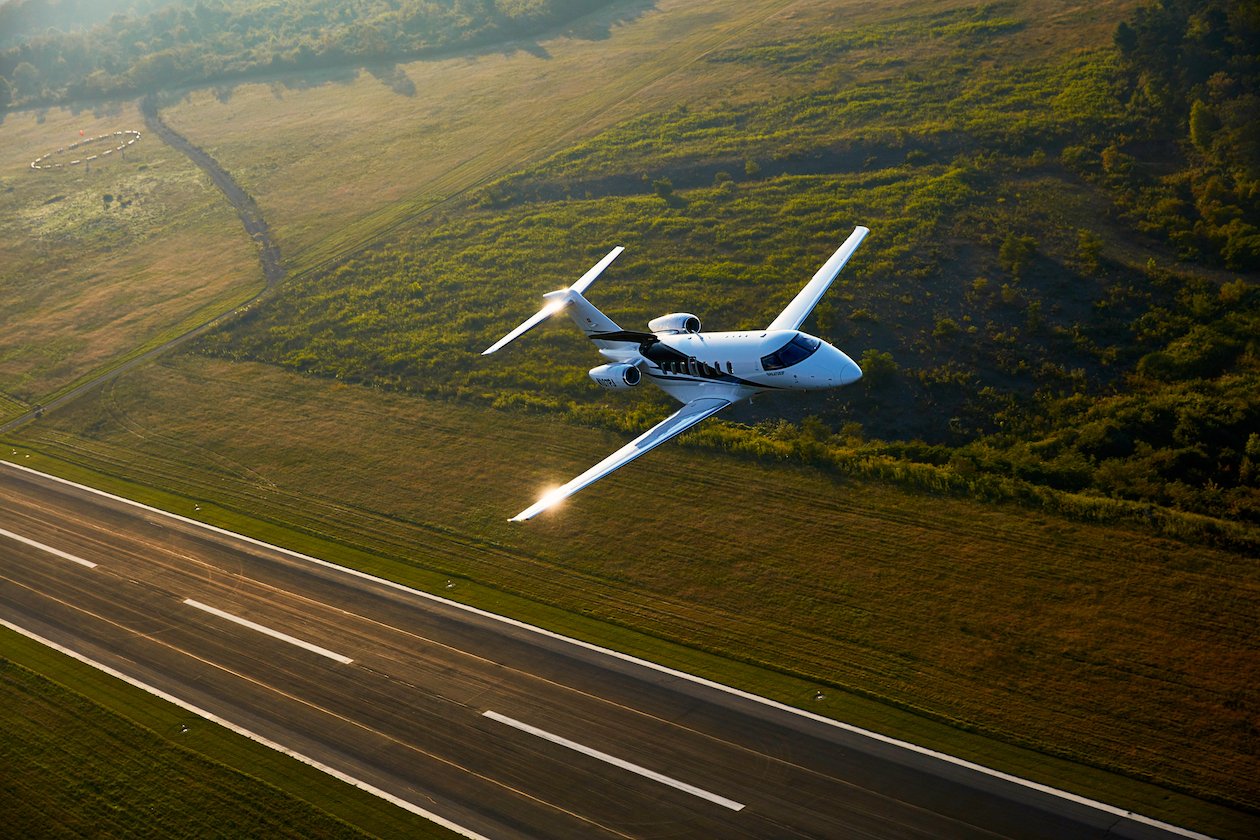Where others fear to tread
After years of design and speculation about what's next, Pilatus' PC-24 represents a shake up for the luxury jet market.
Written by Mark Beretta
08 June 2021
For decades, Pilatus has been known as one of the greatest names for planes with propellers. As such, their first luxury jet – the new flagship PC-24 – marks a bold change of direction for the company as it muscles its way alongside the traditional big names.
Making its mark
Levelling off at 45,000 feet (13,700 metres) is the most potent reminder you’re in a very special new breed of Pilatus. The Swiss maker, famous for incredibly versatile and reliable aircraft, has blasted into the jetosphere.
From the first time you set eyes on the PC-24 parked on the tarmac, its looks get the heart pumping that little bit faster. Your eyes can’t help but be drawn to its powerful presence, created by a design that gives the feeling of a substantially bigger jet. It lures you aboard with the promise of being able to get you where you need to be – fast!
And that’s where the PC-24 really leaves the others in its jet wash. Pilatus aircraft have become famous for their short-landing and take-off capabilities, and the PC-12 has always been able to get into short dirt strips where others fear to put their wheels down.
But the PC-24 isn’t just comfortable on short, dirt runways – it eats them for breakfast. It’s a handy feature in Australia and the reason both the PC-12 and the new PC-24 are the preferred choice of Australia’s Royal Flying Doctor Service (RFDS) as well as various emergency services and police departments – the ability to get in and out of tight, unmade airstrips is crucial for these organisations.
In fact, the Pilatus jet can be airborne with as little as 800 metres of sealed runway, or 1,000 metres of unsealed airstrip. No other jet can do that. Stone-guards have even been fitted above the wheels to prevent damage to the fuselage from rugged dirt airstrips.
Twice as nice
More than ever, companies are turning to their customers to understand what they truly want. And when you have such a riveted-on bunch of owners like the PC-12 has developed, it makes good sense to seek their input.
Pilatus Australia’s CEO Sebastian Lip puts it simply: “We spoke to our PC-12 owners, who said they want to get where they’re going faster – and a bigger, more comfortable cabin.”
Those loyal Pilatus owners won’t be disappointed with speed or interior space. And with a maximum cruising speed of 815 kilometres per hour, it’s twice as fast as its little sister, the PC-12.
The power and performance are best measured by our climb out of Sydney on a sample route that ended in Canberra. In just 23 very comfortable minutes after take-off, we levelled out at 45,000 feet – and stretched out in the leather luxury of the state-of-the-art cabin.
Coming from the nation that’s home to the world’s finest watchmakers, it’s little wonder the details and finishes on the PC-24 are precise and elegant. For starters, you can hear a watch tick in the new super-quiet cabin. There’s also a brand-new swivelling seat design that’s more comfortable and ergonomic, while its leather craft and design easily make it the most stylish seat in the sky.
The spacious new cabin gives the feeling of being on board a much larger jet. The windows are bigger, and with the six-seat executive configuration (optional up to eight-seat), there is a lot of space. Loaded up with six passengers and their gear, the maximum range in still air is 3,334 kilometres – or Melbourne to Darwin – in one hop.
The step up into jet land has significant speed advantages but also improves comfort. Being able to cruise at a maximum altitude of 45,000 feet allows the pilot to choose a height that minimises headwinds, making the trip both smoother and quicker. The PC-24 can cover Adelaide to Sydney in two hours.
(The PC-12 takes three hours with a cruising altitude of 27,000 feet.)
Pilots will be delighted with the new feature that allows passengers to control the air-conditioning and lights via a WiFi connection on their phone or iPad. It also displays flight data such as altitude, speed, wind and arrival information. Another big plus is that the
PC-24 is certified for single-pilot operation. That’s a major selling point for all Pilatus aircraft and something that was important to carry through to the PC-24.
The cabin seats offer plenty of features to complement their comfort. Armrests have drink holders, USB chargers, and switches for the overhead reading lights. There’s a good-size fold-out tray table and below it a 115-volt power plug for laptops, iPads or phone charging.
Ready for action
What makes the Pilatus jet extra versatile, however, is the large side cargo door. At 1.25 metres wide by 1.3 metres high, it allows some serious cargo – or really fun toys – to be loaded. (Owners in the United States have been known to pop a couple of seats out and put a pair of motorbikes in the back, ready for a few days of adventure on the dirt.)
Its new level of versatility has made it tricky to classify the PC-24 into existing categories, but Sebastian puts it like this: “It’s an SVJ – a Super Versatile Jet.
“It’s got the expanded cabin size of a mid-size jet, the versatility of our famous turboprop, and the operating cost of a light jet. All in a bigger, faster jet. Our customers are delighted. We’ve already delivered seven PC-24s into Australia, with more on order.”
The PC-24 comes from an impressive pedigree – Pilatus is renowned for the performance of their turboprop PC-12. They have also serviced the Royal Australian Air Force (RAAF) with the PC-9 pilot training aircraft, which until recently was used by the RAAF Roulettes. That’s now been replaced by the next generation, the bigger and more powerful PC-21, also manufactured by Pilatus.
The RAAF will boast 49 PC-21s for pilot training and use by the Roulettes. Australia’s RFDS has taken delivery of four PC-24s so far, with a further two on order. In their configuration, it flies with three medical stretcher beds and equipment. The upshot of all this for owners is a solid support network on the ground in Australia, with Pilatus having just shifted into a new $20-million state-of-the-art Australian headquarters at Adelaide airport.
Pilots will be very happy with the PC-24, and its efficient and intuitive cockpit. “The cockpit inclusions rival those of much bigger and more expensive players like the Dassault Falcon,” says Sebastian.
“With the big cargo door, its versatility and short take-off and landing capabilities, there’s no cabin at this price that has the same room and flat floor.”
And the price? The PC-24 sits in the US$11.5–12-million range. By comparison, the NGX, or updated PC-12, is around US$5.5– 6 million. The Swiss factory is aiming at turning out 40 PC-24s a year. About 80 have already been delivered around the world, mostly across North America and Europe.
Pilatus has doubled down in the luxury aircraft space with their entry into the world of jet flight. The result is a stunning success – and a win for those loyal owners and new customers in the luxury jet market. The PC-24 is going to be a big player in the executive market for many years to come.
This article originally appeared in Ocean #93. To subscribe to Ocean, click here.




